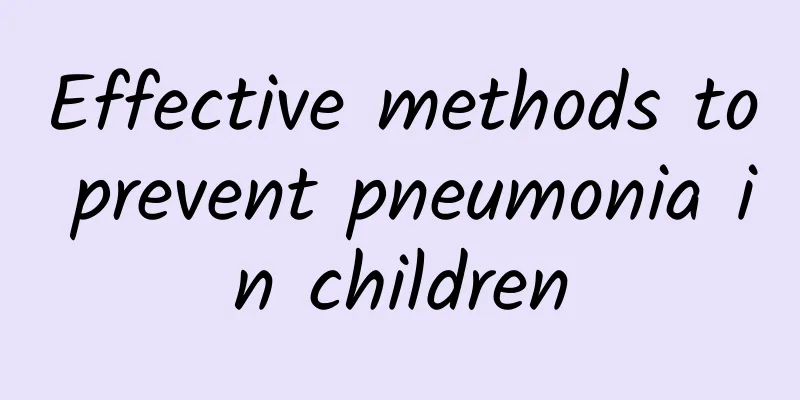Giving your baby probiotics can help reduce jaundice

|
Nine out of ten babies have jaundice. Many babies will encounter the first "hurdle" of neonatal jaundice soon after birth, which is basically the first problem that bothers new parents. Statistics show that about 50% of full-term babies have jaundice in the first week, and the proportion of premature babies with jaundice is as high as 80%. Neonatal jaundice is the yellowing of the skin, mucous membranes or tissues and organs due to excessive accumulation of bilirubin in the newborn's body. It can be divided into physiological and pathological jaundice. Pathological jaundice requires timely medical treatment, while physiological jaundice only needs proper care and will recover on its own. It will disappear on its own in about one to ten days, and may last for more than three weeks in premature infants. How to accurately judge the severity of jaundice? Parents can observe the degree of yellowing of the newborn's skin under natural light. If only the face is yellowed, it is mild jaundice; if the skin of the trunk is yellowed, it is moderate jaundice; if the limbs and palms and soles are also yellowed, it is severe jaundice. Carefully observe the changes in jaundice. Jaundice starts to turn yellow from the head and fades from the feet. The eyes are the first to turn yellow and fade the last, so you can start with the eyes. You can also press any part of the body. As long as the skin you press turns white, it doesn't matter. If it turns yellow, you should pay attention. The best way to deal with physiological jaundice is to let the baby defecate more often, because meconium contains a lot of bilirubin. If the meconium is not completely excreted, the bilirubin will be reabsorbed into the blood, which will increase jaundice. If the baby's stool changes from black to yellow, it proves that the meconium has been completely excreted. The baby should also be given enough water, because too little urination is not conducive to the excretion of bilirubin. Generally, the normal number of urination is 6-8 times a day. You can also give your baby some Mommy Love probiotics to promote the establishment of normal intestinal flora in newborns. It can also help your baby's intestinal peristalsis, thereby reducing the enterohepatic circulation of bilirubin, promoting bilirubin excretion, and reducing the activity of β-glucuronidase (β-GD) in duodenal fluid and feces, preventing conjugated bilirubin from being hydrolyzed into indirect bilirubin, thereby speeding up the elimination of jaundice. If the jaundice is severe, parents should take the baby to the hospital for a professional diagnosis by a doctor. Because the causes of pathological jaundice are also divided into infectious, breast milk jaundice or hemolytic jaundice. Phototherapy is usually used as an auxiliary, because ultraviolet light can convert bilirubin into something that is easier to excrete through the baby's urine. If the neonatal jaundice is severe or the bilirubin level continues to rise after phototherapy, the baby will need exchange transfusion therapy. Physiological jaundice has little adverse effect on the baby, but pathological jaundice may cause more serious consequences if not promptly addressed. Therefore, if you have any questions about your baby's neonatal jaundice, you must seek medical attention in a timely manner to ensure that you choose the correct treatment for neonatal jaundice. |
<<: What are the early symptoms of neonatal jaundice and cerebral palsy
>>: What department does neonatal jaundice belong to?
Recommend
How to improve baby's indigestion? What is the best food for baby's indigestion?
Indigestion in babies is a common problem. Eating...
What is the cause of mumps in children
Mumps in children is mainly caused by viral infec...
How to cure acute laryngitis in children
Acute laryngitis in children is often secondary t...
Is polio treatable?
Polio cannot be completely cured, but early diagn...
Can jaundice hepatitis be cured?
Icteric hepatitis is a type of hepatitis with ele...
What to do if your child coughs frequently
The problem of children coughing frequently often...
Is hand, foot and mouth disease contagious in adults?
Hand, foot and mouth disease is contagious in adu...
What to eat for breast milk diarrhea
What is good to eat for breast milk diarrhea? Thi...
Kidney disease treatment drugs for children
The treatment of children's kidney disease sh...
What causes high hemoglobin?
High hemoglobin levels usually mean that the body...
Causes of congenital heart disease in children
The causes of congenital heart disease in childre...
Can polio be cured in my 30s?
Patients in their 30s may still be able to improv...
How to treat children's cough at night How to treat children's cough at night
If your baby coughs at night, you should control ...
What to do if your baby catches a cold and coughs
When your baby catches a cold and coughs, don'...
How to treat a three-year-old child's cough?
Children have poor resistance. As the weather cha...









